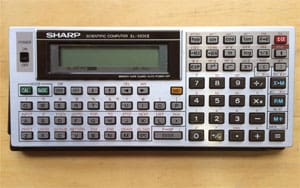The reality cannot be avoided: In order to learn anything new and get better at it, effort must be applied. True, whether one is learning to cook, sew, sing or practice celestial navigation. There is no simple way of avoiding effort — and besides, why would we want to? So for those who want to learn to navigate in a traditional manner, you will have to exert some effort. But, and this is important, once you have made the initial effort, there are tools available that will make the practice of celestial sights as simple as brewing a pot of coffee.
Traditionalists insist that we use HO 229 because it is more accurate than HO 249. Others say the old HO 214 or HO 211 are the best methods. Actually, the choice of sight reduction tables makes very little difference. Find a sight reduction method that works for you and master it. Personally I am very much at ease using the air tables (HO 249) developed during WWII combined with the Nautical Almanac. William Buckley, who did a great service in popularizing celestial navigation in his books and videos, preferred the air almanac. All that matters is that you can complete the process comfortably when you are both tired and a little seasick.
But, after you learn the longhand method, it is time to simplify; by that I mean instead of going to the tables, let your fingers do the walking on a hand-held calculator. There are lots of apps available and navigation programs for the computer, but for the past 25 years I have gotten yeoman’s service from the celestial calculator called the Celesticomp V. This calculator, developed by John Watkins out of Washington, is the sine qua non of celestial calculators.
The Celesticomp V was programmed on a Sharp PC-1270 pocket computer with a ROM cartridge that fit in the back. The memory can’t be lost even if there is battery failure. This tool is such a workhorse that it is disconcerting to no longer have them in production (I think Sharp discontinued the model or went out of business). Celesticomp V can found only on eBay where they sell for about half the original price, which was about $290. I have sailed thousands of miles with this little tool and it has saved me hundreds of hours of time in the reduction of star, moon or planet sights. It will inform me of unknown stars, provided I enter the Hs and the bearing of the star. The prompts are simple, even for a Luddite like me. And here’s the thing: The easier it is to reduce shots, the more observations will be taken and the greater chance for increasing accuracy and all of that is good.
The point being is that we want to get up to speed and develop confidence as quickly as possible. The calculator, computer app or navigation programs won’t help you understand that when you put garbage in, you get garbage out. But it will easily point out anomalies in the sight reduction process. I combine the use of the calculator with the physical process of using plotting paper to plot my results. This way I can convert the results into LOP or fixes; the clarity of doing that is, for me at least, the best of both worlds.
To be sure, these computers and navigational apps and computer software programs are all marvelous tools, but they are just that — tools — that make the job easier in the same manner that a table saw will help simplify a woodworking project for a skilled carpenter. In both instances, there is no substitute for understanding and experience. A celestial calculator or any supplemental computer program will assist the skilled navigator who is already trained in the concepts and basic techniques of celestial navigation.
A tool like my Celesticomp — and I have three of them by the way, including a backup and a backup for the backup — has a permanent nautical almanac for the sun, moon, and the other planets and 173 stars, and has all kinds of bells and whistles to calculate great circle courses, rhumb line, course over ground, etc. It will calculate your time for morning twilights, nautical twilights and civil twilights, and can update the DR automatically.
It also does away with the need for precalculation of stars for twilight. All I have to do is shoot a star and record its true bearing and the time in GMT, along with the sextant altitude. If I don’t know the star, I enter a prompt called “unknown star,” and my trusty little Celesticomp reduces the HS to HO and spits out what the star is.
I highly recommend finding a calculator that is programmed to do celestial navigation and learning to use it, initially as an adjunct to the longhand method. As you develop confidence you will find you rely on it more and more — just remember to carry an extra set of batteries. Now go out there and have fun.

